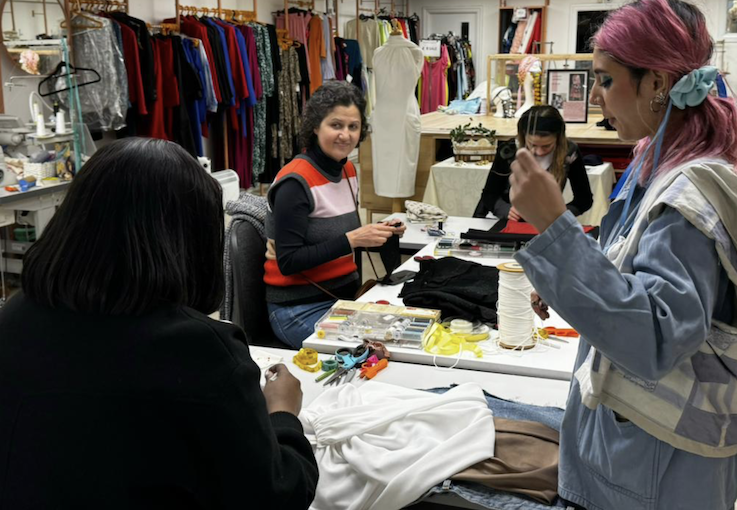Black Friday Is Back – But Do We Need It?

17-11-2025
This past month my inbox has been overflowing with Black Friday: “early access”, “pre-sale events” and “biggest offers ever”. What used to be a day of discounts has somehow stretched across autumn.
For huge global retailers, this is easy. They plan months in advance, build discounts into their margins, and use Black Friday to drive massive sales spikes. But for small businesses, already squeezed by rising costs across food, fashion, transport and energy, the pressure to join the price-slashing frenzy can feel overwhelming.
Many small independent retailers are asking the same question: Do we join in, or do we step away?
Meanwhile, in the background, the anti-Black Friday movement – Green Friday – is gaining traction, arguing that the event fuels overconsumption, encourages impulse buying, and diverts business away from small makers and local shops who simply cannot, and should not, compete with global giants on price.
If you’re a small brand, especially one making in the UK, the truth is simple: deep discounting destroys your margins. Big retailers can slash prices because they rely on mass production, overseas labour, and inflated year-round pricing. But independents operate on real costs, fair wages, and genuine craftsmanship.
When your products are made locally, by people who are properly paid for their skill, the price isn’t inflated. It’s honest. Discounting it doesn’t just cut into profit it undermines the value of the work.
Customers learn fast. Run a Black Friday sale once, and next year they’ll wait for it. And the year after that, resulting in a situation where buying full-price becomes the exception, not the norm. For small businesses, that’s a slippery slope.
If you visit our shop FC Designer Collective on Fonthill Road in North London you won’t find any Black Friday deals – but you will find some wonderful locally made items, including upcycled pieces and sample stock and fabric that is on sale all year round. And we are not the only ones – as more people are turning away from mass discount culture and towards:
- Shopping locally
- Repairing and repurposing what they already own
- Upcycling damaged or outdated items
- Buying second-hand or vintage
- Supporting social enterprises and charity shops
- Choosing quality over quantity
Not only does this reduce waste and carbon footprints, it keeps money circulating within local communities and supports the jobs, makers, and traditions that make towns and neighbourhoods unique.
This is where small businesses can shine.
So, What Can Small Brands Do Instead of Discounting?
Here are five powerful alternatives that support your values, your community, and your bottom line.
1. Celebrate Craftsmanship Over Cost
Highlight how your products are made, who makes them, and why those skills matter. When customers understand the labour, artistry, and expertise behind a piece, full price feels justified not inflated.
2. Offer Thoughtful Extras, Not Deep Discounts
Small businesses can create experiences big corporations can’t:
- Gift wrapping
- Handwritten notes
- Repair / alteration services
- Personalised touches
- Customisation options
These add value without cutting into the price.

(Repair and Upcycle Drop In Workshop at FC Designer Collective, Fonthill Road, London N4)
3. Promote Circular Alternatives
Lean into the sustainability movement by offering:
- Repair or mending workshops
- “Bring-back” or upcycling schemes
- Second-hand or archive pieces
- Rental options
- Advice on caring for and extending the life of products
This reduces waste and strengthens your connection to eco-conscious consumers.

(Latest brand stocked at FC Designer Collective – Atelier Macleod)
4. Tell Your Local Story
Customers increasingly want to know where their money goes. Show them:
- How your business supports local jobs
- How buying from you keeps money in the community
- How your materials, makers, or suppliers contribute to the local economy
- How your business reduces waste or environmental harm
When people understand the impact of their purchase, they feel part of something bigger.
5. Stay Visible Without the Discounts
Don’t disappear in November. Use the rise in seasonal shopping energy to:
- Launch new products
- Share behind-the-scenes content
- Showcase customer stories on socials
- Promote gifting guides focused on values, not bargains
- Be bold and unapologetic about choosing no discounts
Customers respect clarity and conviction.
Black Friday’s appeal is clear, especially when prices everywhere are rising. But there’s another way to shop this season, one that’s gentler on the planet, better for local economies, and far more meaningful.
For small businesses out there feeling the pressure of November discounts: You don’t have to join the race. You can lead a different conversation – one that an increasing number of shoppers are starting to hear.























